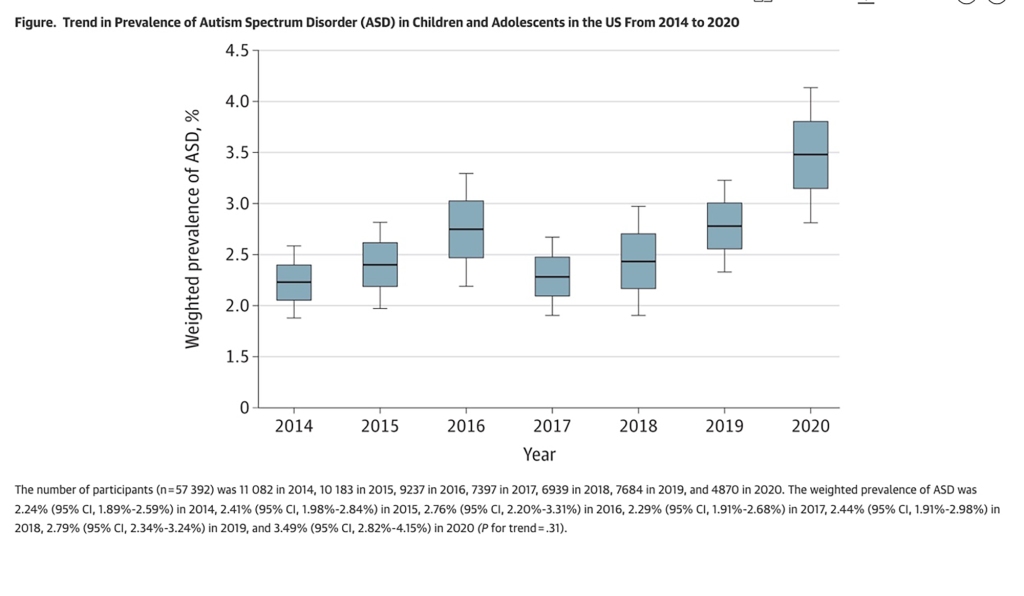1 in every 30 kids now has autism — a 50% jump from 2017
The number of young people living with autism spectrum disorder is growing rapidly.
A new study has revealed a nearly 52% spike in autism spectrum disorder prevalence among children and teens in the US between 2017 and 2020.
Now, one in every 30 kids will be diagnosed with the developmental disorder, which presents a range of behavioral and cognitive symptoms.
The findings from public health researchers at Guangdong Pharmaceutical University in China were published in JAMA Pediatrics Monday.
Study authors did not discuss potential causes for the stark rise, though many experts have attributed the increase to greater awareness of the condition among parents and doctors.
Using data from the annual National Health Interview Survey, conducted by the US Centers for Disease Control and Prevention, researchers showed that figures have risen gradually since 2014, with a dip in cases between 2016 and 2017, then trending steadily upward again by 2020.
In 2014, 2.24% of children and adolescents were diagnosed with ASD. By 2016, it reached 2.76%, then dropped to 2.29% in 2017. As of 2020, the latest statistic available, that number was 3.49%.
They also noted significant differences in prevalence between certain groups. In 2020, 4.64% of boys were diagnosed with ASD versus just 1.56% of girls. Family income also seemed to play a role as those with lower economic statuses are more often diagnosed with ASD. However, the causes for such discrepancies were not included in the current study.
As the name implies, autism spectrum disorder may become apparent at any age and in varying degrees of severity. ASD impacts how these people communicate and interact with others, and for a subset on the spectrum a typical social situation can be very difficult to navigate. On the other end, symptoms may not be as obvious on the outside, but felt more internally.

People with ASD don’t relate to the world the same way mainstream society has been programmed to do. According to the CDC, children with ASD may not make eye contact, and readily engage in conversation or emote, while also often misunderstanding emotional cues in others. As they age, they may form restrictive, repetitive or obsessive behaviors and interests. Due to such obstacles, communication and socializing can be a source of anxiety and stress for people with ASD.
As yet, there is no single test that can determine whether someone is on the autism spectrum, and given the wide breadth of signs and symptoms associated with ASD, screening and diagnosis may not be easily obtained, the CDC said. However, they do recommend that parents and guardians of young children be aware as an early diagnosis — as young as 18 months old — can help kids get the social and academic support they need so they can better adapt as they mature.
Read the full article Here


